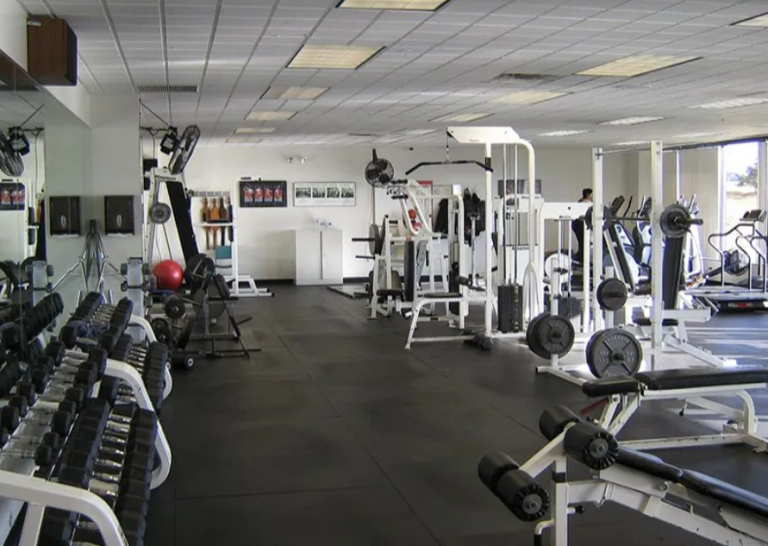When choosing commercial gym flooring, it is important to consider factors such as durability, safety, and maintenance. The flooring should be able to withstand heavy use and provide a non-slip surface for users.
Additionally, the flooring should be easy to clean and maintain to ensure a hygienic environment for gym-goers. In this guide, we will discuss the different types of commercial gym flooring options available and provide tips on how to select the perfect flooring for your gym.
Why Gym Flooring is Important?
Sprung Gym Flooring Gym flooring is important for several reasons. It plays a crucial role in providing a safe and comfortable exercise environment for gym-goers. The right type of flooring can help to reduce the risk of injury and provide a non-slip surface for users. Additionally, gym flooring is important for the maintenance and upkeep of the gym.
Proper flooring can make it easier to clean and maintain a hygienic environment, which is essential for the health and well-being of gym-goers. Additionally, flooring can also play a role in the aesthetic of the gym and can help to create a positive and professional image for the gym.
Why Gym Floors Need Protection During Winter?
Gym floors need protection during winter for several reasons:
Moisture:
Snow and ice can melt and bring in excess moisture onto the gym floor, which can cause warping, swelling, or discoloration in some types of flooring.
Salt and De-icers:
Salt and other de-icers used to melt snow and ice can be abrasive and can cause damage to the gym floor surface.
Dirt and debris:
Winter weather can bring in dirt, debris, and other contaminants that can scratch or damage the gym floor surface.
Temperature fluctuations:
Cold temperatures can cause some types of gym flooring to contract, which can lead to gaps or cracking. Rapid temperature changes can also cause the flooring to expand or contract, which can lead to damage over time.
Protecting your gym floor during the winter can help preserve the integrity of the flooring and prolong its lifespan, saving costs for repairs or replacements in the future.
- Use mats or runners: Place mats or runners at high-traffic areas, such as entrances and exits, to catch any excess moisture or debris from being tracked onto the gym floor.
- Implement a no-shoe policy: Encourage members to leave their shoes at the entrance of the gym to prevent dirt and salt from being tracked onto the floor.
- Clean and maintain regularly: Keep the gym floor clean and dry to prevent damage from winter conditions. This includes sweeping and mopping regularly, as well as using a floor protectant to repel water and salt.
- Use floor protection: Use temporary or semi-permanent floor protection to cover your gym flooring during heavy snow or rain. This can include plastic sheeting or tarps to protect your gym flooring from water damage.
It’s important to note that different types of flooring may have different requirements to protect them. It’s best to consult with the manufacturer or a professional to know the best ways to protect your specific gym flooring.
WHICH MATERIALS IS REQUIRED FOR GYM FLOORING?
Common materials used for gym flooring include rubber, foam, and vinyl. Rubber is a durable and slip-resistant option that can handle heavy weights and equipment. Foam provides a cushioned surface for exercises such as cardio and stretching.
Vinyl is a budget-friendly option that is easy to clean and maintain. The choice of material will depend on the type of activities that will be taking place in the gym, as well as the budget and desired aesthetic.
Conclusion
In conclusion, gym floors need protection during winter to prevent damage from moisture, salt and de-icers, dirt and debris, and temperature fluctuations. Implementing measures such as using mats or runners, implementing a no-shoe policy, cleaning and maintaining the floor regularly, and using floor protection can help protect your gym floor and preserve its integrity. It’s important to consult with the manufacturer or a professional to understand the specific needs of your gym flooring and implement the appropriate protection measures.

